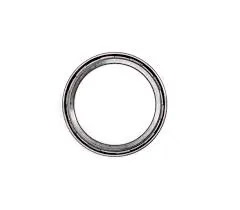12 月 . 03, 2024 16:50 Back to list
auto head gasket
Understanding Auto Head Gaskets Importance, Types, and Common Issues
The head gasket is a vital component in an internal combustion engine, acting as a seal between the engine block and the cylinder head. Its primary function is to contain the high-pressure combustion chamber gases while allowing coolant and oil to flow through various passages. This may seem like a minor part, but the head gasket plays a crucial role in the overall performance and efficiency of the vehicle. In this article, we will delve into the importance, types, and common issues related to auto head gaskets.
Importance of the Head Gasket
The head gasket serves several key purposes
1. Sealing It prevents the mixing of oil and coolant, which is essential for the engine's longevity and performance. A compromised head gasket can lead to severe engine damage.
2. Compression Maintenance The head gasket maintains compression within the cylinders, which is critical for the engine's power output. If the seal fails, it can result in a significant loss of horsepower and efficiency.
3. Heat Regulation The head gasket also regulates the flow of coolant, helping to maintain optimal operating temperatures within the engine. An overheating engine can lead to catastrophic failure, often necessitating extensive repairs.
4. Emission Control A properly functioning head gasket helps ensure that exhaust gases are routed correctly, contributing to lower emissions and compliance with environmental regulations.
Types of Head Gaskets
Head gaskets come in various types, designed for different engine configurations and materials
1. Metal Head Gaskets Typically made from multi-layered steel, these are known for their durability and high resistance to heat. Metal gaskets are commonly used in high-performance and turbocharged engines.
2. Composite Head Gaskets Made from a combination of materials, including rubber, fiber, and metal, composite gaskets are popular for their ability to conform to irregularities in the engine surfaces. They are often found in standard production vehicles.
3. Graphite Gaskets These gaskets offer excellent thermal resistance and are often used in older engines or those that require a specific sealing performance.
4. MLS (Multi-Layer Steel) Gaskets A type of metal gasket designed with multiple layers, MLS gaskets provide enhanced sealing capabilities and are often used in modern engines due to their ability to handle higher compression ratios.
Common Issues with Head Gaskets
auto head gasket

Despite their importance and varying designs, head gaskets can fail over time due to several factors
1. Overheating One of the primary causes of head gasket failure is overheating. If the engine temperature rises beyond the safe threshold, it can warp the cylinder head and damage the gasket seal.
2. Improper Installation Incorrect torque specifications or poor alignment during installation can lead to premature gasket failure. It’s essential to follow manufacturer guidelines during installation.
3. Corrosion Over time, coolant can lose its effectiveness and allow for the rusting or corrosion of gasket surfaces. Regular maintenance and fluid changes are essential in preventing this issue.
4. Aging Like all materials, head gaskets can deteriorate with age. The heat and pressure from continuous engine operation can cause them to wear down, resulting in leaks.
Signs of Head Gasket Failure
Recognizing the signs of head gasket failure can save car owners from costly repairs. Common symptoms include
- Overheating Engine Frequent overheating can signal a compromised head gasket.
- Coolant Leaks Puddles of coolant under the vehicle or visible leaks can indicate a gasket issue.
- Milky Oil If the engine oil appears milky or frothy, it may be due to coolant mixing with oil, a classic sign of head gasket failure.
- White Exhaust Smoke This can indicate coolant burning in the cylinders, which happens when the gasket fails to seal properly.
- Loss of Power A noticeable decrease in engine performance can indicate compression loss due to a failed gasket.
Conclusion
In summary, the head gasket is a critical element of an engine that demands respect and attention. Understanding its importance, types, and potential issues can help vehicle owners maintain their engines' health and avoid costly repairs. Regular maintenance, prompt repairs of cooling systems, and being vigilant about engine temperatures are the best strategies to prolong the life of this vital component. By paying attention to your head gasket, you ensure a smoother, more efficient ride for years to come.